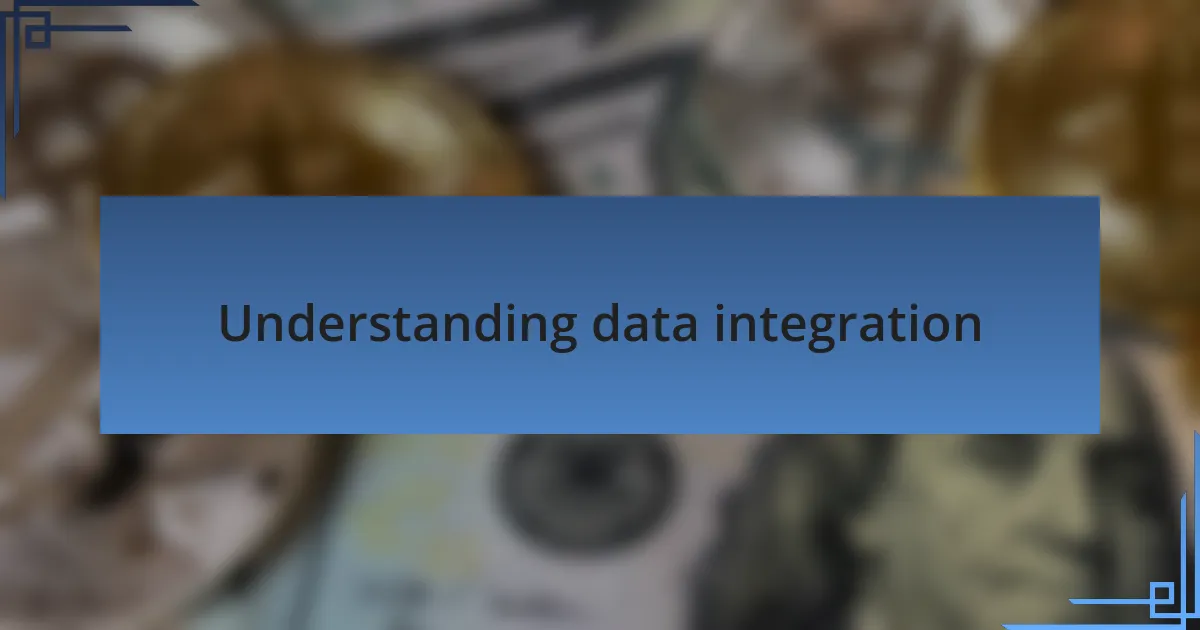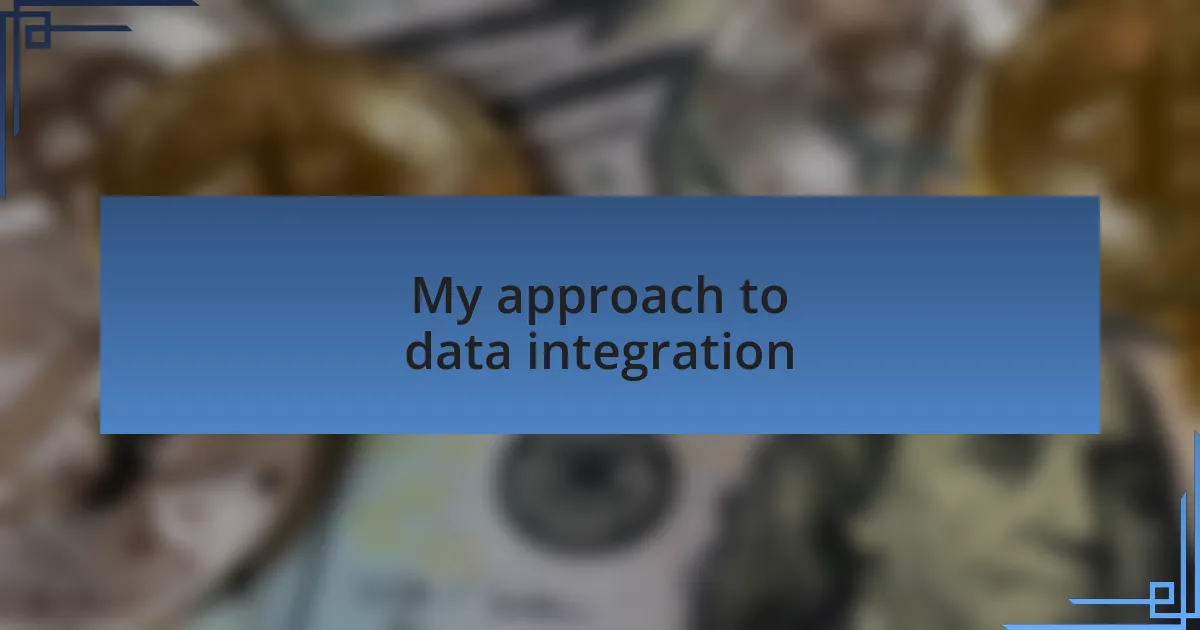Key takeaways:
- Data integration is essential for marketing agencies to gain insights and enhance decision-making by consolidating data from multiple sources.
- Utilizing effective tools like Zapier and Microsoft Power BI streamlines workflows and improves data visualization, facilitating better collaboration and understanding.
- Best practices include maintaining data consistency, ensuring security measures, and prioritizing communication with stakeholders for a successful integration process.
- Adopting a tailored and agile approach to data integration allows for flexibility, quick problem-solving, and continuous learning from each project experience.

Understanding data integration
Data integration is the process of combining data from various sources into a unified view, which is crucial for any marketing agency looking to make informed decisions. I remember a project where we pulled data from social media, email campaigns, and website analytics. The moment we consolidated this information, the clarity it provided was staggering—it felt like flipping a switch.
Think about it: without effective data integration, how can we truly understand the impact of our marketing efforts? I often wonder how many insights go unnoticed simply because the data remains siloed. The integration process not only fuels better decision-making but also enhances collaboration among teams, ensuring everyone is on the same page.
When I first started exploring data integration, it felt daunting. The technical jargon and complex systems seemed overwhelming. But once I embraced it, the fruits of that labor became apparent as we gained a deeper understanding of our audience’s behavior and preferences. It was like discovering a hidden path that led to clearer goals and more effective strategies.

Tools for effective data integration
When choosing tools for effective data integration, I often rely on platforms like Zapier and Integromat. These tools allow me to automate workflows between various applications effortlessly. I remember a time when we used Zapier to connect our CRM with an email marketing tool; the seamless data flow saved us hours and ensured no lead slipped through the cracks.
It’s also worth noting that integration tools like Microsoft Power BI have completely changed how I visualize and analyze data. With its user-friendly interface, I can create insightful dashboards that tell a story with the data. I recall presenting these dashboards to our team and witnessing the “aha” moments as they recognized patterns we hadn’t seen before.
Additionally, I’ve found that utilizing API connections can be a game-changer for deeper integrations. Just recently, I worked on a project where we integrated our e-commerce platform with a customer feedback system using APIs. It was incredible how quickly we could gather and respond to customer insights, ultimately enhancing our service delivery. Have you ever experienced a similar breakthrough with tools that made a complex task feel simple? The right tools can unlock new possibilities and streamline our efforts, transforming the way we approach data integration.

Best practices for data integration
When it comes to best practices for data integration, consistency is key. I’ve learned that establishing standardized data formats across applications can drastically reduce errors. There was a project where inconsistent customer data caused chaotic reporting. After implementing a unified format, everything fell into place, making my analysis far more reliable. How often do we overlook the power of uniformity in our datasets?
Another important practice is prioritizing data security during integration. I remember a colleague who faced a significant setback when sensitive information was compromised due to a lack of proper security measures. This experience taught me to always employ encryption and regular security audits. Are we really doing enough to protect our data as we integrate systems? I’ve come to believe that safeguarding our data not only protects our company but also builds trust with our clients.
Lastly, frequent communication with stakeholders throughout the integration process cannot be overstated. I recall a time when our team didn’t involve marketing early enough in a new data initiative. This oversight created rifts and redundancies that could have been avoided. Engaging all parties from the start ensures that everyone’s needs and concerns are addressed. Don’t you think collaboration can turn what seems like a daunting task into a more manageable team effort?

My approach to data integration
My approach to data integration focuses on understanding the unique needs of each project. I often start with a deep dive into the specific requirements and challenges that our clients face. There was a time when a client’s sales and marketing tools were operating in silos, causing confusion and misalignment. By taking the time to map out their processes, I was able to create a tailored strategy that connected these systems. Isn’t it fascinating how the right information flow can illuminate the path to better decision-making?
I also find that employing agile methodologies in my integration process enhances flexibility and responsiveness. For example, during a recent integration, we encountered unexpected data discrepancies. Rather than getting bogged down, I quickly pivoted our approach, involving the entire team in troubleshooting. This not only resolved the issue swiftly but also fostered a sense of shared ownership. How often do we underestimate the value of adaptability in our work?
Ultimately, I prioritize continuous learning from every integration project. Each experience offers new lessons, whether it’s refining our tools or enhancing our communication strategies. I still think about a particularly tough integration where I underestimated the importance of user training. The challenges the users faced highlighted gaps I hadn’t considered. Does it ever strike you how much room there is for growth in each endeavor?